Feature
Using Human-Centered Design to Enhance the Guest Experience at the Dallas Arboretum
Connected Science Learning May-June 2022 (Volume 4, Issue 3)
By Rob Rouse, Dara Rossi, and Dustin Miller
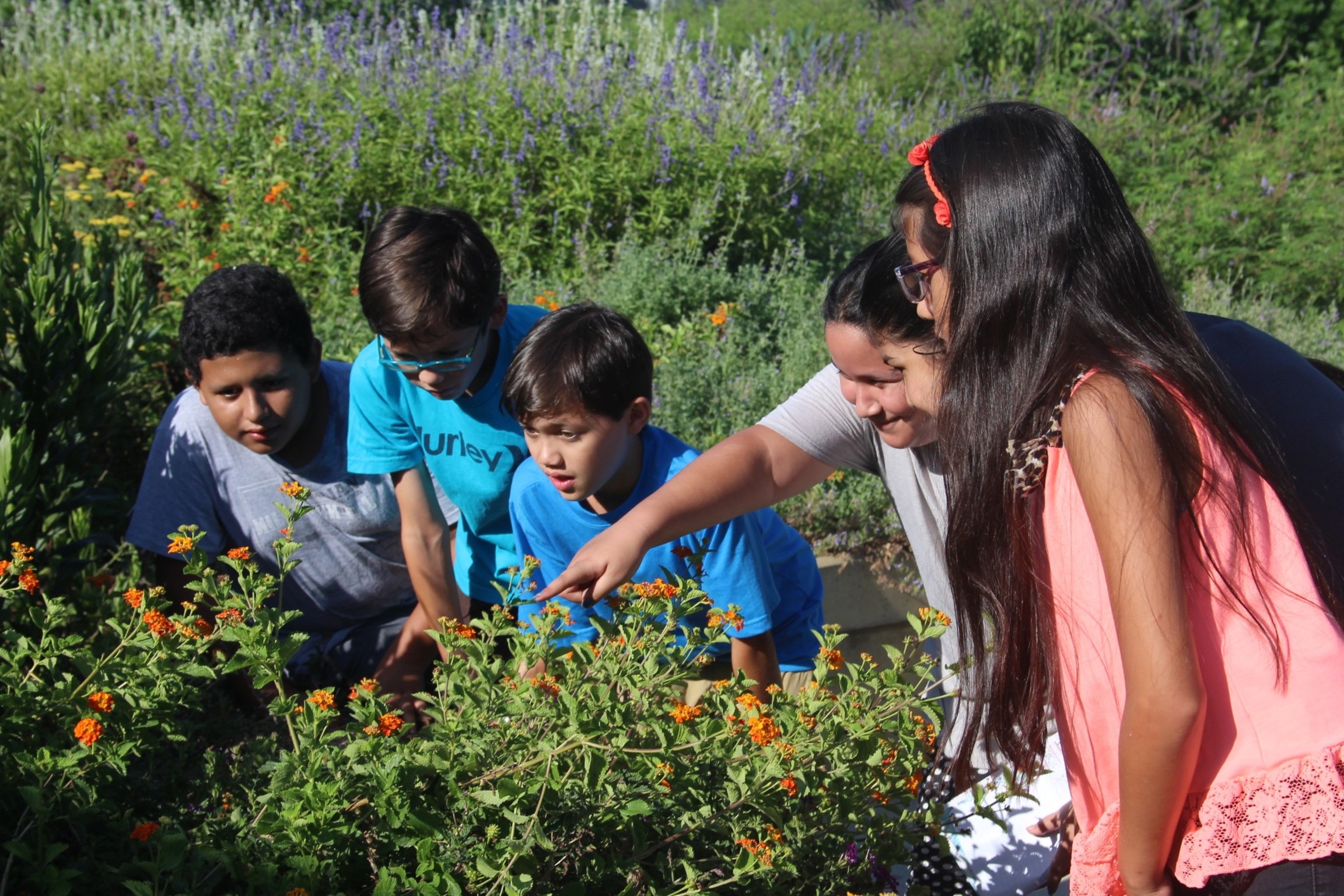
We are former K–12 teachers and current science, technology, engineering, and mathematics (STEM) educators working in Dallas, Texas. One of us works as the Senior Director of Experience and Innovation for the Dallas Arboretum and Botanical Garden (hereafter referred to as the Arboretum) and two of us work as professors in the Department of Teaching and Learning at Southern Methodist University (SMU). Over the past few years, our professional paths have crossed many times in our efforts to support K–12 students and teachers by providing them with rich STEM learning experiences inside and outside of classrooms. Our common interests and professional proximity eventually led us to collaborate on several projects. In this article, we discuss one of these collaborations, an undertaking in which we leveraged our combined resources to give practicing teachers enrolled as graduate students in a STEM education course at SMU the opportunity to enhance the guest experience at the Arboretum using human-centered design.
When embarking on this collaboration, our primary goal was to capitalize on our shared interest of supporting STEM teachers developing innovative teaching methods that may be useful in their own practice. This goal aligns with recent recommendations made by the National Research Council (NRC). For example, in their publication Call to Action for Science Education: Building Opportunity for the Future, the NRC recommended postsecondary institutions work hand-in-hand with informal STEM education institutions in an effort to improve STEM education at the local and regional level (National Academies of Science, Engineering, and Medicine 2021).
It was also our goal to introduce practicing STEM teachers to the possibility of regularly collaborating with informal STEM education institutions that offer educational resources to teachers and that provide educational programming to K–12 students. This goal aligns with recommendations made by the National Science Teaching Association (NSTA). For instance, in their position statement on learning science in informal environments, NSTA advocated using informal science learning institutions as venues for the delivery of professional development to teachers (NSTA 2021). In addition, this goal is supported by research showing that providing teachers with professional development through informal learning environments (e.g., by performing hands-on scientific investigations emphasizing inquiry and the nature of science) can result in increased content knowledge, changes in instructional methods, and increased student academic performance (Melber and Cox-Petersen 2005; Weinstein, Whitesell, and Schwartz 2014).
Because of the roles we hold at our respective institutions, we found ourselves well positioned to blend the resources of an informal STEM education institution (the Arboretum) with the resources of a postsecondary education institution (SMU) to achieve our goals. By reporting the results of this project, we hope that it will serve as an example for how partnerships between such institutions can breed practical and innovative STEM learning experiences for teachers. In addition, we hope that this work will serve as a microcosm for what may be possible in a larger and more substantial STEM learning ecosystem.
Background
This project was developed jointly by the Arboretum and SMU and adhered to best practices for creating impactful collaborations between informal science education institutions and communities of teachers (Moisan 2009). In the sections that follow, we provide background information related to our organizations. In addition, we also introduce human-centered design, the method participants used during the project.
Dallas Arboretum and Botanical Garden
The Dallas Arboretum and Botanical Garden is located on the shores of White Rock Lake, a prominent landmark in east Dallas. Its mission is to maintain a public venue that promotes the art, enjoyment, and knowledge of horticulture, while providing opportunities for education and research. The Arboretum has a 75-member Board of Directors, 120 full-time and over 50 part-time paid staff members, and more than 250 active volunteers.
The Arboretum covers 66 acres and includes the Rory Meyers Children’s Adventure Garden (hereafter referred to as the Children’s Garden), an eight-acre Earth and life science laboratory. Using the Children’s Garden as a hub for STEM learning, the education mission at the Arboretum is to cultivate a connection to nature and inspire environmental stewardship through garden-based experiences. Examples of experiences at the Children’s Garden include: Texas Native Wetlands (certified as an official field site for the Texas Parks and Wildlife Department’s Texas Aquatic Science program) (see Figure 1) and the Moody Oasis (a certified Monarch waystation) (see Figure 2). In addition, the entire Children’s Garden is a National Wildlife Federation–certified wildlife habitat.
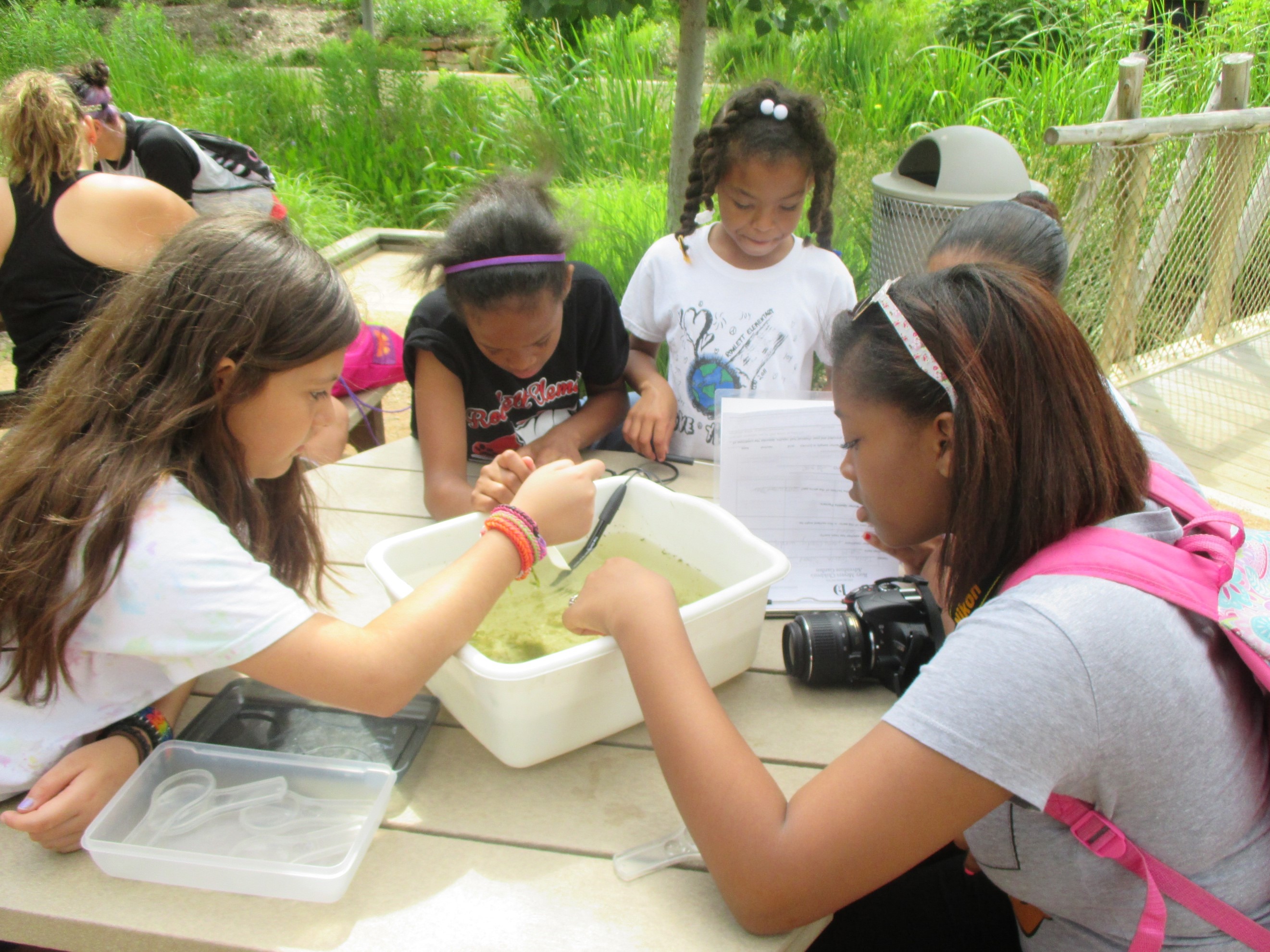
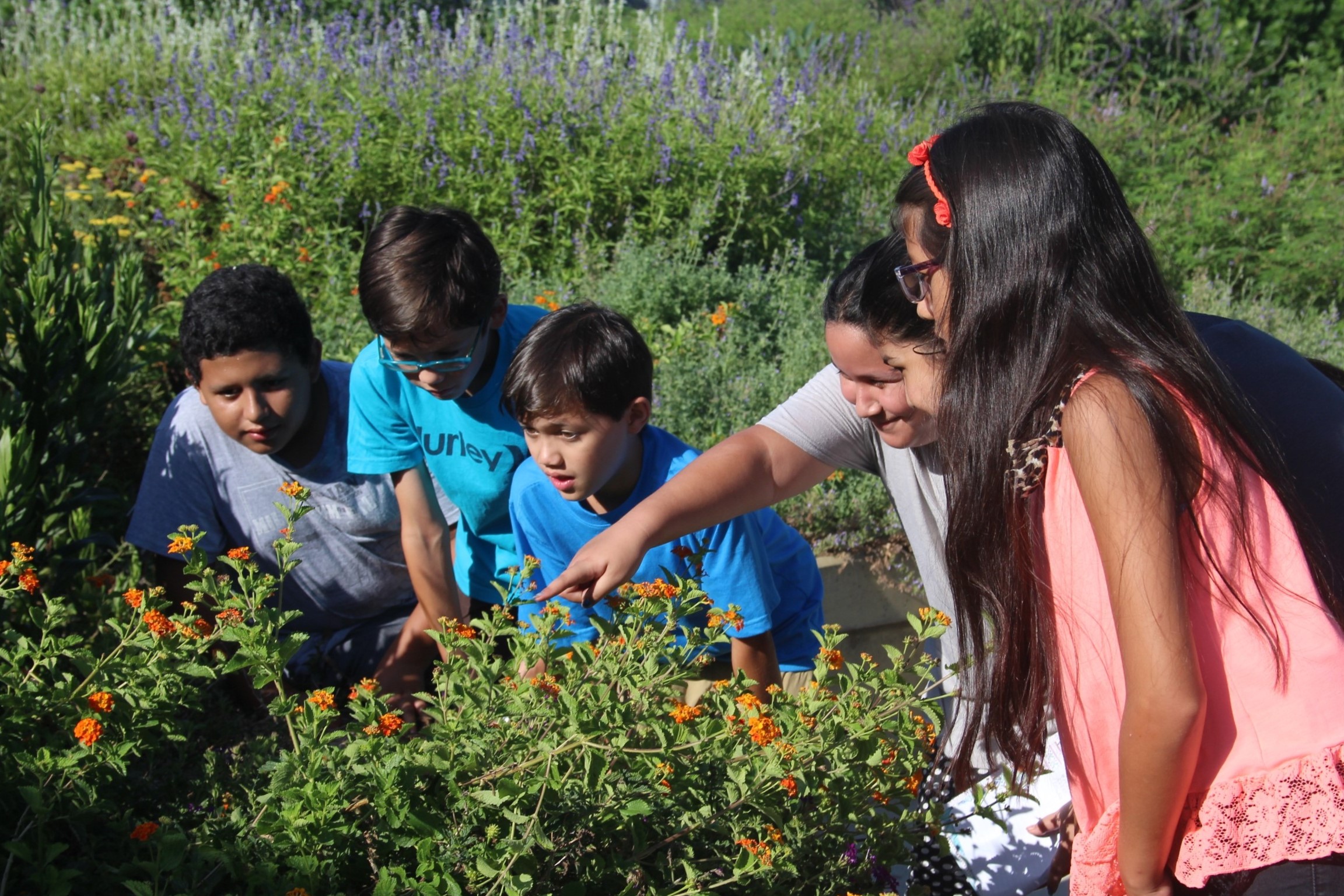
Southern Methodist University
Southern Methodist University is a private nonsectarian university located in central Dallas. The mission of SMU’s Simmons School of Education includes cultivating collaborations between education-focused organizations throughout Dallas. For example, administrators and faculty at the School are engaged in an ongoing partnership with Dallas Independent School District and the Toyota USA Foundation to create a STEM-focused PK–8 school in west Dallas that features an innovative industry-informed and project-based STEM curriculum.
The Department of Teaching and Learning is located within the Simmons School. Teaching and Learning’s mission includes developing teachers who can meet the needs of all learners. For those individuals interested in STEM subjects, Teaching and Learning offers a four-course sequence leading to a STEM education specialization. Most individuals enrolled these courses are practicing teachers from public, private, and charter schools serving K–12 students.
We designed the capstone course of the STEM education specialization with the intention that SMU graduate students would partner with a STEM-focused community resource (e.g., zoo, museum, planetarium) to develop an innovative project that they could enact with their K–12 students with the support of the community resource. In this project we altered the existing course format so that all SMU graduate students partnered with the Arboretum and used human-centered design in an effort to enhance the guest experience at the Children’s Garden.
Human-Centered Design
Human-centered design (HCD) is an approach to solving complex problems used across a variety of fields. The power and appeal of HCD is that it is grounded in a set of principles that promote designers building empathy for the people who they wish to design for, reacting flexibly to the needs of those people, and then creating solutions to satisfy those needs (IDEO 2015). Although HCD is not a linear process with a required number of steps, it is typically made up of three distinct phases: inspiration, ideation, and implementation (IDEO 2015). During the inspiration phase, designers use methods such as interviews, observations, and guided tours to build empathy for the people experiencing an issue. During the ideation phase, designers share the results of the inspiration phase, identify themes, generate ideas for solutions, develop prototypes, and test those prototypes. During the implementation phase, designers pilot solutions, share their results with people in the outside world, evaluate their results, and iterate their solutions in response to feedback. Notably, HCD shares some features with the methods used in the field of Visitor Studies (e.g., observations, interviews, questionnaires). However, in this article, we focus on how teachers used HCD because of its emerging and promising use in schools and classrooms.
Diefenthaler et al. (2017) noted that human-centered approaches to problem solving have the potential to be used by teachers to reimagine how schools can meet the diverse needs of K–12 students, support teachers collaborating, and promote students developing a variety of 21st-century skills such as creativity, critical thinking, and collaboration. In the past, educational researchers have used human-centered approaches to problem solving to engage students in solving: (a) school-related issues, (b) outside-of-school issues, and (c) provocative hypothetical issues (Carroll et al. 2010; Cook and Bush 2018). For example, Carroll et al. (2010) conducted a study in which seventh graders used design thinking—a human-centered problem-solving approach related to HCD—to redesign existing systems at the school’s playing field, parking lot, and cafeteria. Carrol et al. found that as a result of the curriculum they enacted, K–12 students developed conceptions of themselves as agents of change and demonstrated empathy for understanding human needs.
While human-centered approaches to problem solving may have great potential as instructional methods, there are relatively few opportunities for STEM teachers to learn about these methods (Diefenthaler 2017). Thus, our primary goal during this project was to provide STEM teachers with a genuine and relevant opportunity to use HCD to solve a real problem, enhancing the guest experience at the Children’s Garden. We reasoned that by giving STEM teachers a concrete, real-world experience with HCD, we would simultaneously teach them about HCD and allow them to judge how they might use human-centered approaches to problem solving in their own classrooms and in their own practice going forward.
Project Planning and Preparation
Preparations for launching and completing the project were significant and included solving logistical issues, getting participants familiar with HCD and informal STEM education venues, and orienting participants to the Children’s Garden. Some of these preparations took place before the course officially started and others were incorporated into the course at different times during the semester. Importantly, all preparations were the results of negotiations between the Arboretum and SMIU, with each side making adjustments to ensure the project would work. In the following sections, we describe the preparations we made in greater detail.
Solving Logistical Issues
We were confronted by several significant logistical issues at the start of the project. First, we ran into an issue related to course location. That is, we knew that the teachers enrolled in the course would likely need to spend a lot of time at the Arboretum rather than at SMU. As a result, we planned for the first few class sessions to meet at SMU and the remaining class sessions to meet at the Arboretum. Second, we ran into an issue related to timing. Because the course is composed of practicing teachers, we teach the course in the evening. This way, practicing teachers can meet for class after they finish teaching for the day. However, the Arboretum closes in the late afternoon, which prevented us from holding classes at the Arboretum in the evening. To solve this issue, we scheduled the course to meet on Saturday mornings. Because the weekend is a particularly busy time at the Arboretum, we had to coordinate to arrange for instructional space and parking. Because we taught the course in the spring, some teachers used part of their spring break to complete project field work at the Arboretum.
Getting Teachers Familiar With HCD and Informal STEM Education Venues
We anticipated that many of the teachers enrolled in the course would not have experience with HCD. Thus, to prepare teachers to successfully complete the project, we first introduced them to HCD and then asked them to enact a brief HCD activity at their school campus. We termed this activity an HCD mini sprint. The primary goal of having teachers complete the mini sprint was for them to learn more about the HCD process and how it unfolds in real time. Examples of HCD mini sprint projects included exploring how different genres of music energize K–12 students as they enter the school building, piloting alternative lunch schedules, and investigating how to better meet the needs of students working in small groups.
After completing the HCD mini sprint, teachers began researching informal STEM education venues. To do this work, teachers formed small groups of three to four people. Groups usually formed based on pre-existing work groups from previous classes or by pre-existing friendships. Next, each group selected a local informal STEM education venue to research. By conducting this research, teachers became familiar with how informal STEM learning venues operate and the types of services they provide. After completing this research and sharing their findings with their classmates, we met on site for an orientation of the Children’s Garden.
Orienting Teachers to the Children’s Garden
During our first meeting at the Arboretum, teachers participated in a comprehensive orientation. This orientation served two purposes. First, it familiarized teachers with the Children’s Garden and its many learning exploration centers known as galleries. Second, it allowed us to introduce the goal of the project: How might we improve the guest experience at the Children’s Garden? When we introduced this goal, we made sure to emphasize that it was especially important because the staff at the Children’s Garden were always considering how to give guests the best experience possible.
After the orientation, we conducted a brief review of the HCD process and discussed appropriate methods for collecting data given the nature of the Children’s Garden and its guests. Following this brief review, the teachers set out to explore the many features of the Children’s Garden by traveling throughout the Children’s Garden on foot in their groups. Importantly, we informed teachers that this exploration was meant as a time for them—many of whom had not been to the Children’s Garden—to explore and observe its many features rather than to search out any existing issues, collect data, or attempt to solve what they perceived as problems.
One week later, teachers met at the Arboretum and formed an HCD action plan. In this action plan, teachers created a framework that would guide their HCD work going forward. Depending on the group’s interests and inclinations, these action plans looked different. However, most action plans included objectives, research questions, research methods, ideas for guest recruitment, and a calendar of activities for completing work at the Children’s Garden.
Case Study: Mapping the Arboretum
In this section, we describe how one group of teachers proceeded through the three HCD phases (i.e., inspiration, ideation, and implementation) outlined in IDEO’s Field Guide to Human-Centered Design (IDEO 2015). This group—the STEMinist—consisted of three educators who created a robust HCD action plan allowing for eight days of activities at the Arboretum. Specifically, the STEMinist’s action plan included opportunities for collecting data, synthesizing data, generating “How Might We” statements, prototyping artifacts and processes to solve perceived issues, piloting prototypes with Arboretum guests, and sharing the results of the project with stakeholders.
Inspiration
The STEMinist began collecting data using a “fly-on-the-wall” observation method, which allowed for gathering information inconspicuously (Hanington and Martin 2012). In turn, these observations helped the group get a sense for how guests interacted with the galleries in the Children’s Garden (see Figure 3). As the STEMinist continued their initial data collection efforts, we encouraged them to use the AEIOU framework (Baskinger and Bardel 2013). Using the AEIOU framework allowed the group to collect data from several additional perspectives: activities, environments, interactions, objects, and users. Gathering data through these various lenses helped the STEMinist refine their observations with the goal of categorizing and synthesizing them in the future.
In addition to collecting observational data, the STEMinist also collected informal interview data. To do this, the groups drafted interview questions and posted signs at several of the galleries in the Children’s Garden asking guests to share their input related to navigating and learning in the Children’s Garden. When guests expressed an interest, they were recruited to answer questions such as, “How do you choose the exhibits you visit?” and “How should learning occur at an exhibit?” In addition to interviewing guests, the STEMinist also interviewed several volunteers and staff members working in the Children’s Garden to get their perspective on these and similar questions.
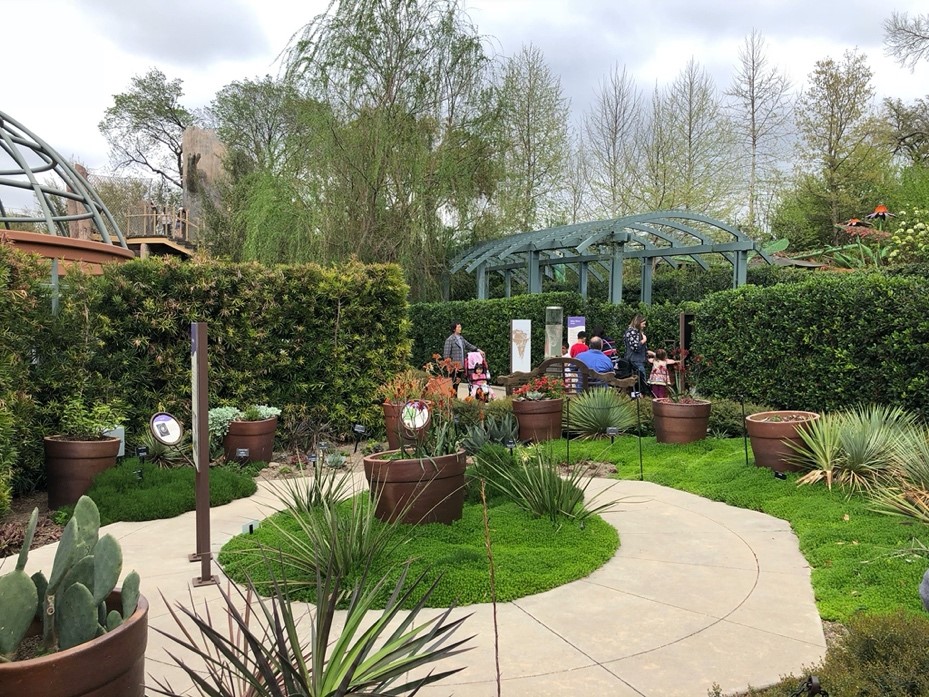
Ideation
During subsequent visits, the STEMinist completed several synthesis activities to tease out key insights from the data they gathered. For example, they used an activity called affinity mapping during which they transferred all observations and quotes from their data onto sticky notes, writing one distinct idea per note. Eventually, when they had a large number of notes, they proceeded to rearrange and cluster them based on similarities and then labeled the resulting categories (see Figure 4). As the group continued to interpret and discuss the categories, they developed the following key insights:
- Guests do not frequently use the current map and have trouble with navigation in the Children’s Garden.
- Guests want to know what they can learn at each gallery and are excited by the different learning experiences.
- Guests frequently look for restrooms as well as for shade, food, and water.
- Guests take many photos and want to know the best place to take them.
- Guests arrive at galleries uncertain about what they can do at each one.
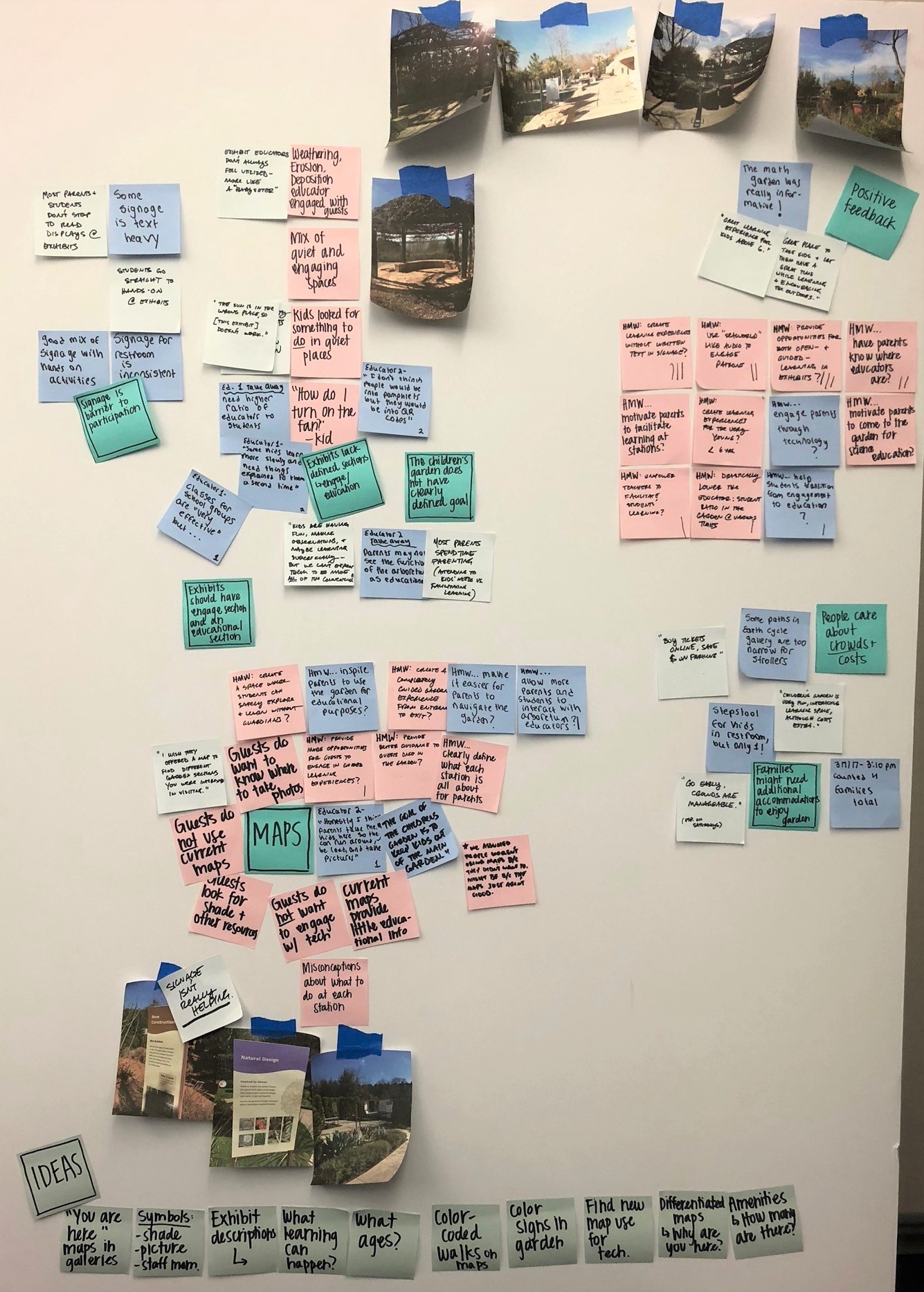
These key insights led the group to identify several prominent themes in the data. First, they noted that the signage was “burdensome” (e.g., signs were absent, obscured, or difficult to read). Second, they found that guests routinely experienced “navigation woes” (e.g., difficulties finding galleries, seating, or shade). Third, they discovered that burdensome signage and navigation woes resulted in “learning miscues,” situations in which guests who expressed an interest in learning particular content at the gallery sometimes left without fully experiencing what the gallery had to offer. After identifying themes, the STEMinist transformed these challenges into design opportunities by reframing them as “How Might We” questions. These questions included:
- “How might we make it easier for parents to navigate the Children’s Garden?”
- “How might we provide better guidance to guests once they are inside the Children’s Garden?”
- “How might we more clearly define the significance and intention of each gallery in the Children’s Garden?”
Implementation
The STEMinist began the implementation phase by meeting with the Arboretum’s senior director of experience and innovation to inquire about the background and specifics regarding the current map in use at the Children’s Garden (see Figure 5 in Supplemental Resources). This meeting led the group to hand-sketch a prototype of an updated map, one that would allow guests to better navigate the Children’s Garden and that provided more guidance related to interacting with the materials in the various galleries (see Figure 6).
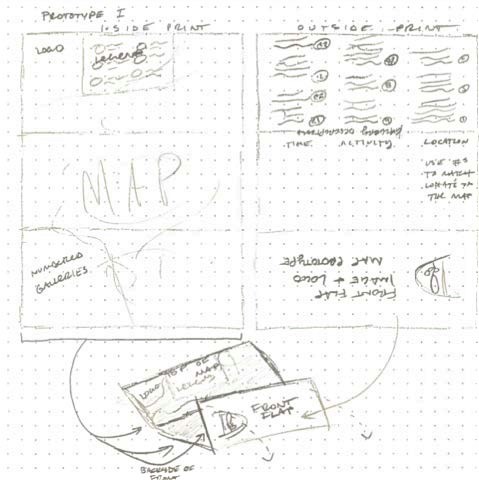
Next, the STEMinist modified the current map to create a digital prototype of their map. This prototype included navigation points, restroom locations, and fun selfie spots. In addition, the map showed the location of water fountains, areas providing shade, and clear descriptions on the back for how guests should interact with the materials in each gallery to maximize the experience (see Figure 7 in Supplemental Resources).
After completing this second prototype, the group set off to test it in the field. They accomplished this by presenting their prototype map to guests and asking for their feedback. Some guests even compared the prototype to the current map. During testing, the group received positive feedback about the prototype map. For example, one guest noted, “It [the prototype map] catches the eye and anyone over 40 couldn’t use the other one [current map].” Another pair of guests noted that they would “definitely use it [the prototype map] to find their way out [of the Children’s Garden].” A final guest found the prototype “much easier to use” than the current map.
While this positive feedback was encouraging, the STEMinist also received constructive feedback. Examples of constructive feedback included a guest reporting that “this part [of the prototype map] already looks upside down,” and another guest acknowledging that they “still couldn’t find the secret garden” with the prototype map. This constructive feedback led the group to iterate their prototype map. For their third prototype, the STEMinist incorporated all feasible feedback into another digital version. As the semester was ending, the group was not able to get feedback on their third prototype from guests at the Children’s Garden. However, the group did present their updated map to the Arboretum’s senior director of experience and innovation as well as a small group of designers at an event at SMU to celebrate the project. Although the primary goal of the project was to introduce teachers to the process of human-centered design rather than create a tangible product, this group was successful in both endeavors. The map the group redesigned (with a few edits) is currently used in the Children’s Garden.
Reflection
In this article, we described an innovative cross-institution partnership between the Dallas Arboretum and Botanical Garden and Southern Methodist University. During the partnership, practicing teachers enrolled as graduate students in a STEM education course at SMU used human-centered design to improve the guest experience in the Arboretum’s Children’s Garden. Our goals for the project were to introduce teachers to innovative methods that may be useful in their own practice and to normalize the idea of partnering with a community-based STEM education institution to do meaningful and impactful work. In an effort to judge our success, we asked teachers in our focus group to reflect on their overall project experiences as well as the effect the experience may have on their future STEM teaching practice. One member of the group stated:
At the beginning of the semester, I set three goals. I wanted to develop “creative confidence,” where I learn to trust the process and the power of my ideas. I wanted to embrace ambiguity, where I am able to go through a process without jumping to a plan and to solutions. Finally, I wanted to develop my ability to learn from failure; while failure has also been something that I feared, I know that the human-centered design process centered around making mistakes and reiterating from those mistakes. By reflecting back on these goals, I am excited by my growth from this course, and I am looking forward to finding ways to continue this growth beyond the scope of this class.
This statement illuminates the types of learning goals that STEM teachers can make and achieve when participating in HCD-focused activities such as the one described here. Importantly, we contend that growing creative confidence, embracing ambiguity, and learning from failure may translate to an improved STEM teaching mindset. Another teacher echoed these thoughts and extended them to include the possibility of using HCD in the future with her students:
Overall, this class has been a very different experience than all my previous educational experiences. It has also been an extremely positive experience. The human-centered design process was in a way very stressful. I’m not used to working without a defined end-goal in mind. On the other hand, the process itself was very freeing. It was freeing to choose my next steps and end-product based on an ever-shifting array of data points, priorities, and insights. This process has sometimes made me wish I was able to use the human-centered design process to plan my lessons and learning activities for students.
This response indicates that this teacher found this work challenging but rewarding. In addition, she expressed that this experience could impact her work as STEM teacher in the future, in terms of actual classroom practice. Although further study is needed to determine the value of teachers participating in HCD activities and how this may impact their teaching practice, overall, we are optimistic that these types of experiences can build STEM teachers’ confidence and potentially transform their classroom practice given time and support.
Next Steps
As the Children’s Garden approaches its 10th anniversary, we believe that now is the ideal time to engage STEM teachers to reimagine and refresh galleries and their related learning objectives. Therefore, we intend to further support SMU graduate students using HCD to improve the Children’s Garden by continuing and extending our current partnership. In future iterations, we plan to extend the timeframe of our collaboration to a full school year. In addition, we intend to offer classroom support for teachers who wish to use HCD in their own schools. We also plan to extend the project to provide human-centered design training opportunities to teachers through the Arboretum’s professional learning program. Finally, we hope to address issues of equity and inclusivity in further iterations by purposefully and systematically gathering information related to the guest experience from a greater variety of guests as well as by developing materials in languages other than English. Doing so would leverage the Arboretum’s network and extend the reach of our work, further cementing our ongoing partnership.
Rob Rouse (rrouse@mail.smu.edu) is a clinical associate professor and Dara Rossi is an adjunct professor at Southern Methodist University in Dallas, Texas, and Dustin Miller is the senior director of experience and innovation at The Dallas Arboretum and Botanical Garden in Dallas, Texas.
citation: Rouse, R., D. Rossi, and D. Miller. 2022. Using human-centered design to enhance the guest experience at the Dallas Arboretum. Connected Science Learning 4 (3). https://www.nsta.org/connected-science-learning/connected-science-learning-may-june-2022/using-human-centered-design
Professional Learning STEM Teacher Preparation Informal Education Postsecondary


